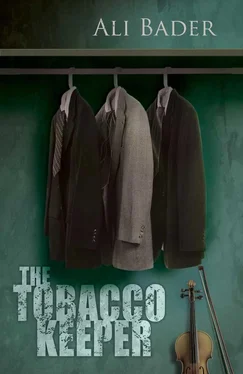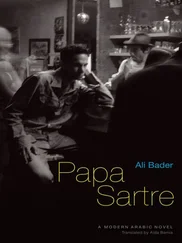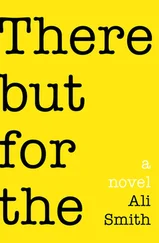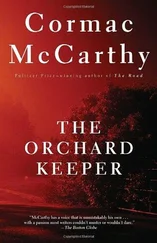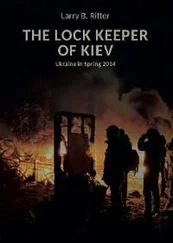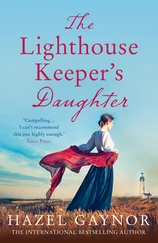During those years, Yousef was in the habit of going out in the evening with friends to the bars in Abi Nawwas on the Tigris and to the nightclubs that had just opened in the square or in Bab al-Agha. He would stay out almost all night with his Muslim friends. There were times when his mother had to bail him out of the police station at dawn, for he was often involved in bar brawls or in exchanges of blows with broken bottles over some prostitute. With downcast eyes, he would walk home with his mother, noticing the wrinkles in her face and the hard look in her eyes, as though she were trying to conceal the feelings of tenderness and compassion she felt for him. In the evening when he left the house once again, she was seized by a renewed bout of severe depression.
His love story with the dancer Munira attracted much attention at that time. He described in one of his letters how two dancers had come to the Hilal nightclub in the square near Bab al-Muazzam. It was the same club where Umm Kulthoum had sung in 1933. Munira was a little shorter than her older sister Jamila, but much prettier. Originally from Aleppo, the two young women had inflamed young men’s desires with their beauty, particularly Munira with her blonde hair and sexy clothes. When she rode with her sister in the black carriage from their lovely house in Hafiz al-Qaddi to the Hilal nightclub in Bab al-Muazzam, all the shopkeepers would leave their shops. They wanted to have a look at the two beautiful Aleppan dancers sitting under the hood of the black carriage, with its gold lamp at the front and its tall coachman standing with his slim whip, as they moved slowly along Al-Rashid Street.
When Yousef attended one of Munira’s performances, he sat in a trance in front of the wooden stage, watching as she gyrated sexily and moved her facial features in time with the music. She bent her body and vibrated her waist more daringly than any other nightclub girl at that time. Munira seemed like a blazing fire at the mercy of the wind. She danced with a quick rhythm and unparalleled gracefulness. Her tall, graceful body shook from head to toe as she danced in front of the audience, smiling, singing softly, her arms raised, her knees exposed, lewdly shaking her waist and shoulders.
(Yousef didn’t explain in his letters how he had got to know her, but he did mention in five of them that she was a real influence on his life and art. Furthermore, after my subsequent trip with Faris Hassan to Baghdad and our many meetings with some of Yousef’s contemporaries, they all confirmed the truth of this relationship. They’d seen them together three times: once at a Friday matinee at the Roxy cinema, the second at a New Year’s party at the English Club and the third time during a Muslim Eid in the late forties, eating ice-cream on Abi Nawwas Street. That was before the expulsion of the Jews, the withdrawal of their Iraqi nationality and the confiscation of their liquid and fixed assets. Everybody affirmed that they had acted like lovers.)
A lot of people saw Munira walking by his side, looking gorgeous with her knowing black eyes and her luscious full-lipped mouth. In one of his letters, he pointed out that what he loved most about her was her Syrian dialect, which was so different from that of Baghdadi women, not only in its intonation and rhythm but also in its expressions, words and proverbs. He was not only charmed by her flirtatiousness, but was also utterly captivated by the Aleppan vocabulary that he didn’t understand.
I tried long and hard to investigate the secret of this relationship and what became of it in 1950, the year of the expulsion. His illness at that time might have had something to do with the end of the relationship, when he was sent to recuperate at one of his aunts who lived on a farm in the suburb of Al-Karkh.
In that unusual place Yousef had got used to seeing grey skies and high buildings. He was charmed by the pure colour and fragrance of the flowers. The West Baghdad Railway Station, with its rails stretching across the fields, seemed a fantasy. He also travelled to Basra, boarding the train with his luggage at the tiny station that was surrounded by tall trees and that gleamed with a rosy hue in the sunlight.
The memory of those days formed an image of paradise. Al-Karkh was spacious and beautiful. Its wide streets were lined with trees and surrounded by green woods. In the spring the muddy roads of winter became sunny and picturesque. Yousef felt that the place represented the birth of a new world, one that was lush, beautiful and wide open. It was here that Yousef was introduced to Farida, who was later to became his wife. One day he picked up his violin and went to visit her family’s house, which was next door to his aunt’s. He played some pieces for them. At that time Farida was studying music at the Laura Khedouri School, and when he played a bar in a completely wrong key, she pointed out his mistake. For him this was as unexpected as it was shocking.
She smiled and indicated to him to stop.
So he stopped and looked at her silently for a few moments. ‘Would you play that again?’ she asked him.
So he repeated it. And in doing so, his fingers repeated the error.
‘That’s not right!’ she told him.
‘What?’ he asked her in astonishment.
Yousef naturally did not acknowledge his mistake, for his passion for music was more an act of worship than a profession. He was preparing himself to become a composer, and he knew that composing did not require virtuosity. But his imperfection devastated him nonetheless.
He broke down in tears in front of her. But she soothed and reassured him, telling him that his musical talent lay in his ability to express himself through music and that he had his own individual language and style.
Those were Farida’s words, she who later became his muse. They were married before he left for Israel.
In the late forties rumours circulated that there was a certain group of young Muslims, Christians and Jews who led a life of dissipation and were frequently seen in the Al-Midan Square, which fifty years earlier had been an old haunt of dancers. Even at that time, it was considered one of the oldest and most artistic districts in the Middle East. Dancers and prostitutes who had been trained in the past by the English survived there as curious relics after the end of occupation. Here in this neighbourhood Yousef found an assortment of women. There were those who wore vests, loose gowns, neck scarves or tight trousers. There were also fat women with large earrings and hair tied back in plaits, who squeezed themselves into tight dresses. When Yousef returned to Baghdad in the eighties and visited the area once again, the neighbourhood had changed so much that he asked himself whether women with such different dialects and looks still lived in sacred Babylon. Diversity was the source of the square’s vitality. As the destination of people from all corners of Iraq, it teemed with different dialects, traditions and lives. It was, in truth, an entire country in itself.
In the late forties, Yousef used to go on almost a daily basis to high-end clubs in the company of his friend Mohammad al-Habib, the son of a rich Muslim trader in Al-Shurja market. Together they rode horses on a day trip to Al-Mansour and its great farms. They went on rides with some other local young men, in Mohammad’s convertible Chevrolet. People said that Mohammad al-Habib would take his friends, including Yousef, on evening rides along the Corniche. On Thursdays, he’d invite them for a sumptuous banquet. And on summer evenings they would dine at exclusive restaurants and clubs where they usually stayed till dawn. After driving around Baghdad, Mohammad al-Habib would gave each and every one of them a lift home.
In fact, Yousef’s remarkable presence, his distinctive way of talking, his cultivation, his musical knowledge and his elegance were the source of his Muslim friends’ admiration. Yousef felt that a massive force had driven him to live in those times, to be inside the arena and not outside. When he turned twenty-one, his friends held a birthday party for him at an upscale restaurant. The newspapers wrote at the time: ‘Seven Jewish, Muslim and Christian young men threw a large party at the English Club on Al-Rashid Street. After finishing their meal and drinking their glasses of Scotch, they started smashing plates and throwing food at each other. They then ran off.’
Читать дальше
